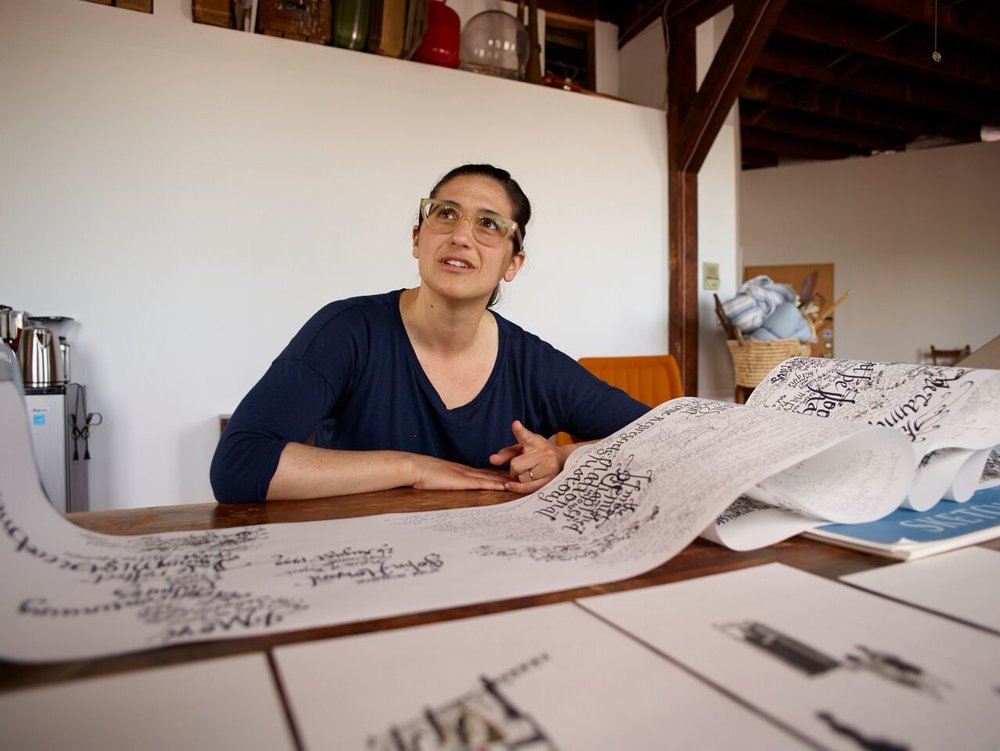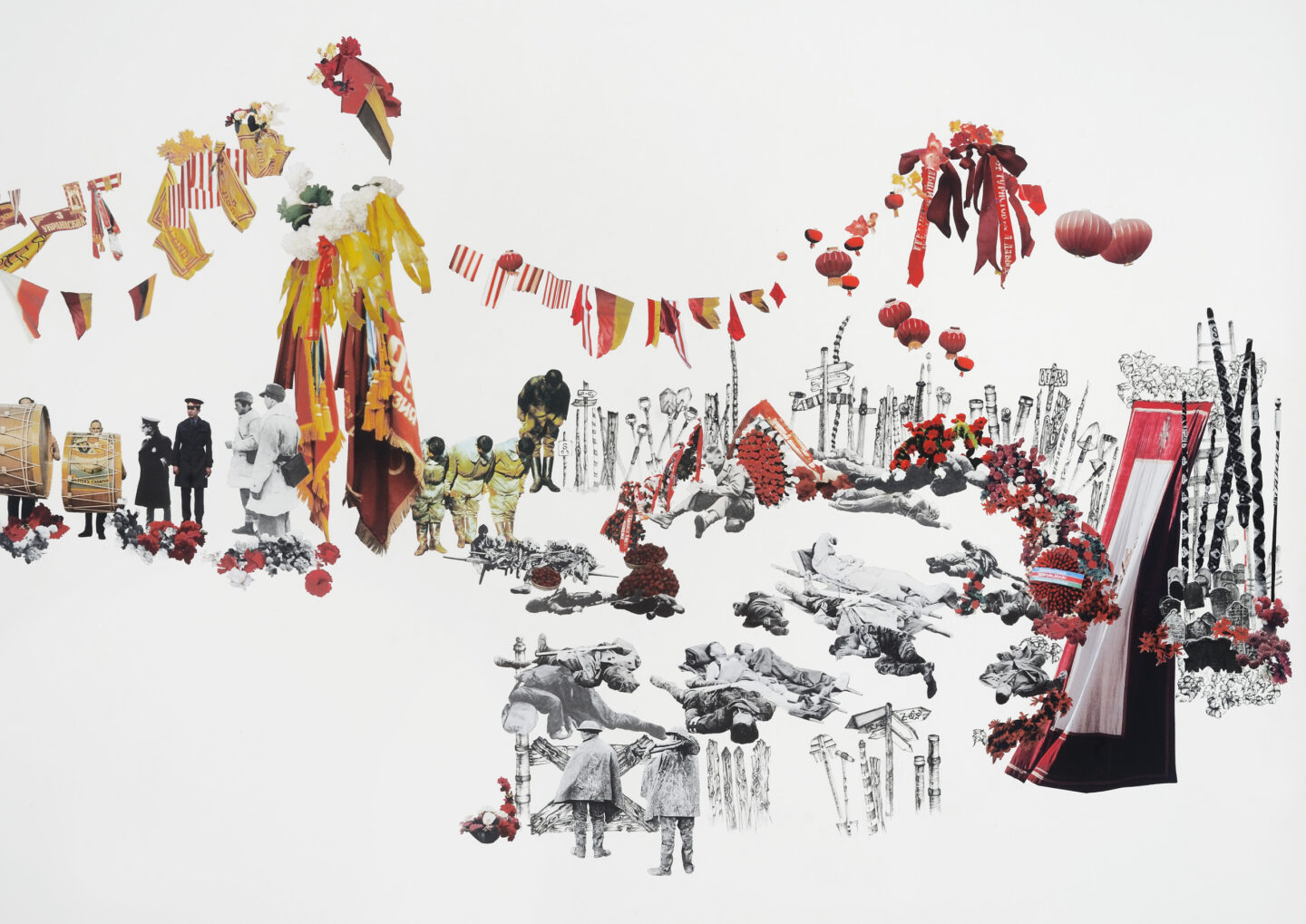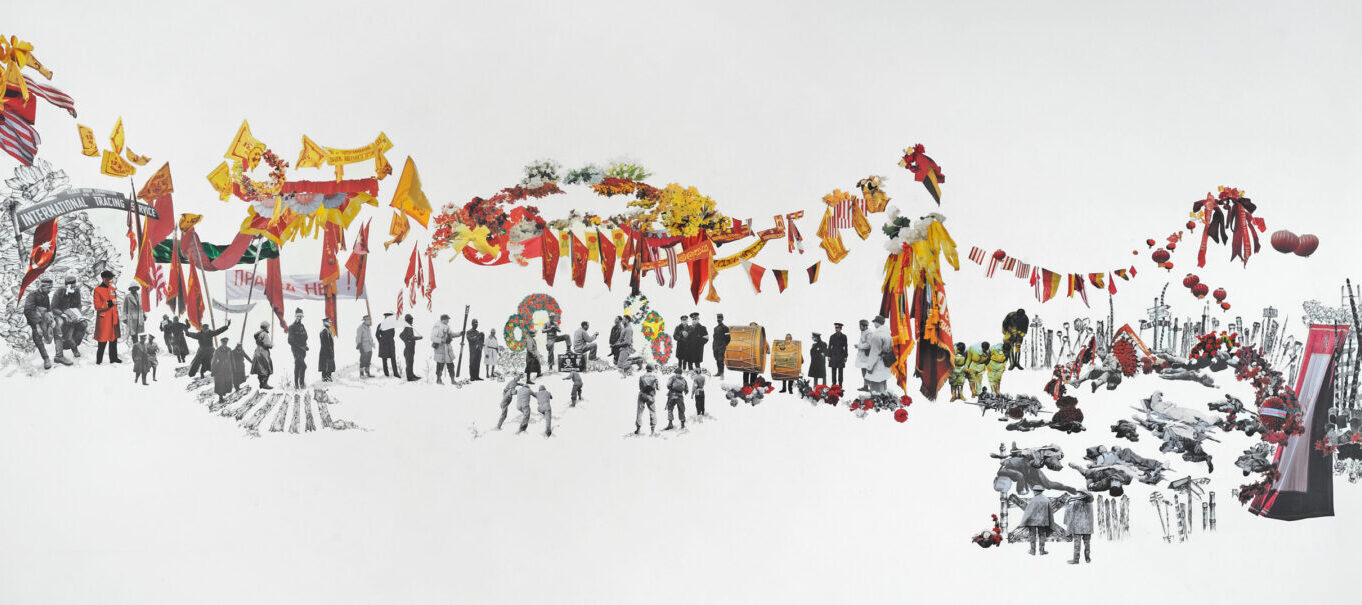The sixth installment of NMWA’s Women to Watch exhibition series, Paper Routes, is presented by the museum with the integral partnership of our national and international outreach committees. The exhibition showcases contemporary artists working in paper, celebrating their wide-ranging approaches and the transformation of this ubiquitous material into complex works of art.
Artist: Rachel Farbiarz
Nominating committee: Mid-Atlantic Region Committee / Consulting curator: Vesela Sretenović, Phillips Collection

1. What was your inspiration for your work selected for Paper Routes?
Memorial Hill (2013) was inspired by the Christmas Truce of World War I. During Christmas 1914, soldiers all along the Western Front emerged peacefully from their trenches and for a brief respite, enemies and combatants sang, played football, exchanged gifts, mugged for photographs, and buried their dead. These “truces” were informal, spontaneous, and widespread. And, as the respective military authorities ensured, they were not repeated.
In making Memorial Hill, I felt like I was touching the fragility and contradiction of these moments of truce. I wasn’t trying to illustrate the truces so much as to inhabit them. I wanted to crawl inside their space as one would burrow into a trench. And once inside, I hung up my flowers, flags, lanterns, and wreaths to insist that these, too, are part of the story, and must always be.
2. Is this piece representative of your oeuvre? How does it fit into your larger body of work?
Memorial Hill uses the same drawing-collage idiom that I have been using and developing for many years. The scale of Memorial Hill, with its smallish images and long scrolling format, also continues to compel me as a set of physical parameters for my work.

3. As an artist, what is your most essential tool (besides your hands!)? Why?
My X-Acto knife, and the endless supply of blades I need to feed it, is like an extension of my hand at this point. I cut out all my collaged elements with these knives. The process is very much like drawing, demanding sensitivity to line and a willingness to revise and re-cut when the line and my hand errs. When I’ve replaced a blade because it has chipped, cracked, or become dull, I can’t bring myself to throw it out. Instead, I place the old blade in a fancy glass in my studio. I must have hundreds in there.
4. Where do you obtain your materials?
All of my collaged elements are taken from used books. In non-pandemic life, I forage in stores, alleys, and curbsides for books that I can incorporate into my large studio library. Over the years, many book lovers have expressed their dismay that I cut books to feed my work. I hope, however, that once they see my process they come to feel that my work ultimately honors, even as it desecrates.
5. What is the last exhibition you saw that you had a strong reaction to?
Marking the Infinite: Contemporary Women Artists from Aboriginal Australia at the Phillips Collection in 2018. Several of the works seemed to vibrate so powerfully that I cried. I stood in front of works in this show longer than I have ever done with any work of art. I could dismiss the power of these emotions by noting that I carried my newborn son with me as I walked through the exhibition. I believe, though, that his presence allowed me to be open to the force of this transcendent collection of work. I feel very fortunate that he and I were there together.
Visit the museum and explore Paper Routes: Women to Watch through January 18, 2021. Hear from more of the featured artists through the Paper Routes Audio Guide and purchase the fully illustrated catalogue.
